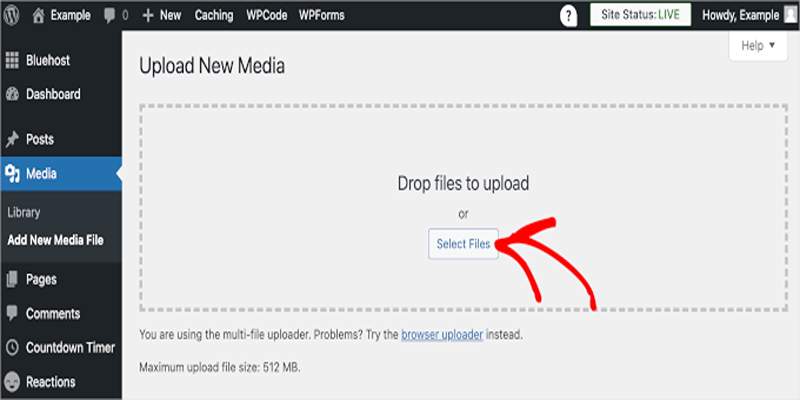Usersnap vs. Userback vs. Marker.io: A Comprehensive Comparison
Deciding on software for obtaining visual input regarding websites and apps proves to be a complicated decision. Usersnap, Userback and Marker.io make up a selection of three widely used software solutions that facilitate simple feedback management. The programs provide distinct capabilities that match different user requirements. The following analysis will explore unique features between the options to determine which tool best suits your workflow needs. We need to identify the right tool for managing your feedback operations.
Usersnap

Usersnap serves as a visual feedback and bug tracking tool which enables teams to receive and organize feedback instantly on their website or application while their users add annotations and comments to screenshots for bug tracking. Usersnap integrates with project management platforms Jira and Trello to streamline the development integration of received feedback.
Key Features
- Annotate screenshots: Usersnap allows users to add arrows, shapes, text boxes, and highlight areas on screenshots to provide clear visual feedback.
- In-app feedback collection: Usersnap enables feedback collection from any website or web application through a basic code insertion.
- Bug tracking: A system lets teams monitor reported bugs as well as delegate assignments to team members and track bug statuses.
- Collaborative feedback: Through Usersnap users can participate in real-time discussions about feedback to solve problems in an efficient manner.
Limitations
- Limited integration options: The connection options between Usersnap and popular project management tools remain limited in comparison to alternative feedback tools.
- Limited customization: Usersnap's design and branding options are limited, making it challenging to fully customize the look and feel of the feedback form.
Userback
Userback is a visual feedback and bug reporting tool designed for website owners, UX designers, and digital agencies. It offers a variety of features to help teams collect, manage, and act on feedback effectively.
Key Features
- Customizable feedback form: Userback provides users with the ability to fully customize the feedback form's design and branding, making it consistent with their brand's overall look.
- Advanced screenshot options: Users can capture full-page screenshots, record screen videos, or use an image editor to provide detailed visual feedback.
- Third-party integrations: Userback integrates with popular project management tools like Asana, Basecamp, and Slack.
- Multi-language support: Userback supports multiple languages, making it suitable for global teams and clients.
Limitations
- No in-app feedback collection: Unlike Usersnap, Userback doesn't offer a code snippet for in-app feedback collection, limiting its use to website owners and designers.
- Limited collaboration features: Userback's collaboration features are not as robust compared to other tools, making it challenging for teams to work together efficiently.
Marker.io
Marker.io is a visual feedback tool that helps teams collect and manage feedback directly from websites or web applications. It offers various integrations and automation options to streamline the feedback process.
Key Features
- Automated screenshot annotations: Marker.io automatically adds annotations to screenshots, eliminating the need for manual editing.
- Custom fields and workflows: Teams can create custom fields and workflows to categorize and prioritize feedback effectively.
- Slack integration: Users can send feedback directly to Slack channels, making it easier for teams to discuss and address issues.
Limitations
- Limited integrations with project management tools: While Marker.io has a few popular integrations, it doesn't offer as many options compared to other feedback tools in this comparison.
- No video recording feature: Unlike Userback, Marker.io doesn't offer screen recording capabilities, limiting its use for providing detailed visual feedback.
How to Choose the Right Tool
Deciding which tool is right for your team ultimately depends on your specific needs and workflow. Consider the following factors when making a decision:
- Type of feedback: If you need in-app feedback collection, Usersnap would be the best option. If you only need website feedback, Userback and Marker.io are suitable choices.
- Collaboration features: If collaborating with team members is crucial, Usersnap's real-time collaboration feature makes it an ideal choice.
- Integration options: Consider which project management tools are used by your team and ensure that the chosen feedback tool integrates with them effectively.
- Customization options: If branding and design are important to your team, Userback provides the most customization options compared to the other tools.
By understanding the key features and limitations of each tool, you can determine which one best fits your feedback process.
How to Effectively Use Feedback Tools

Regardless of which tool you choose, here are some tips to help you effectively use feedback tools in your workflow:
- Clearly define the purpose: Before implementing a feedback tool, make sure to have a clear goal and purpose for collecting feedback. This will help ensure that the tool is used efficiently.
- Train your team: Provide proper training and guidelines for using the chosen tool to all team members involved in the feedback process. This will ensure all members are on the same page and can use the tool effectively.
- Respond promptly: Addressing feedback promptly shows users that their opinions are valued and helps build trust with your audience.
- Regularly review and analyze feedback: Make sure to regularly review and analyze the feedback collected to identify patterns, prioritize issues, and make improvements.
By following these tips, you can make the most out of your chosen feedback tool and continuously improve your product or website.
Final Thoughts
Implementing feedback tools into your workflow can greatly enhance your ability to understand and address the needs of your audience. By clearly defining your goals, training your team, and taking action on the feedback collected, you can create a culture of continuous improvement. Remember, feedback is a powerful resource that can drive innovation and establish stronger connections with your users. Make it a priority to value and act upon the insights you receive, ensuring the long-term success of your product or service.
Related Articles

Exploring Passkeys: How They Work and Their Advantages

Everything You Need to Know About Converting to MP4

The 8 Best Note-Taking Apps for iPad: Stay Organized and Boost Productivity

Fixing Unstable Device Connections: Why Your Device Keeps Disconnecting

Which Are The 6 Best PDF Editor Apps To Simplify Your Workflow: A Guide

Microphone Not Working in Online Learning Platforms? Try These Fixes

12 Essential Software Solutions for Efficient Issue Tracking

Quick and Simple Ways to Create GIFs from MOV Videos

5 Easy Ways to Repair Corrupted PDF Files Online for Free

Fix Media Upload Issues on Websites and Apps with These Steps

How to Enable Mac Dark Mode Automatically and a Windows Alternative: A Guide

 suptoolbox
suptoolbox